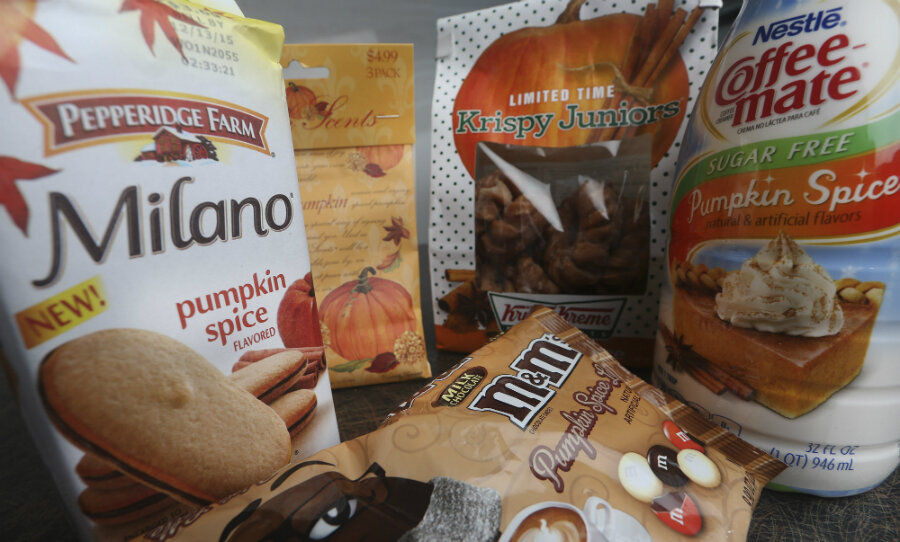Pumpkin spice ... forever?
Twelve years since Starbucks put pumpkin spice latte (PSL) on its menu, pumpkin spice has become an undeniable cultural presence every fall.
And it's even wearing shades.
A cool-looking Pumpkin Spice Latte (@TheRealPSL) with a stylishly whipped 'do has amassed 115k Twitter followers since its first tweet on Aug. 4, 2014, simply announced, "I'm the real Pumpkin Spice Latte. These are my tweets." (In the time since @TheRealPSL has written advice columns, gone on hay rides, fretted about a competing Peppermint Mocha, and shared trip pics on Instagram from a vacation that lasted from December through August.)
BuzzFeed has done its own research, videotaping people tasting PSL for the first time, which seems to confirm that, yes, people like pumpkin spice.
Of course, beneath every cultural cloud lurks a dark shadow, the anti-trenders, the pumpkin-spice haters. "The pumpkin spice must flow" has spawned YouTube videos, T-shirts, and memes. Even presidential candidate Hillary Clinton has turned her back on the calorie-laden PSL.
During a Facebook Q&A, the former secretary of State was asked "Hillary – are you a pumpkin spice latte kinda gal?"
"Ha!" the Democratic front-runner responded, "The true answer is I used to be until I saw how many calories were in them."
(A Grande at Starbucks can have up to 410 calories, but PSL defenders have been debating this furiously on Twitter.)
“Enough with the Pumpkin Spice, America. It’s getting embarrassing," pleaded a Washington Post headline this week.
But the pumpkin spice train left the station long ago and continues to gain momentum. According to a study from Nielsen, 37 percent of US consumers purchased a pumpkin-flavored product last year. Marketers are running with it. Pumpkin spice now flavors everything from hot drinks, craft beers, pet treats, baby food, snack chips, chewing gum, and even Pringles, M&Ms, and Oreos.
It's clear that pumpkin spice isn't going out of season anytime soon.
But plain ol' pumpkin pie filling still reigns as the top pumpkin product, with $135 million in sales in the past year. I have to agree – pumpkin is best kept in the pie.







